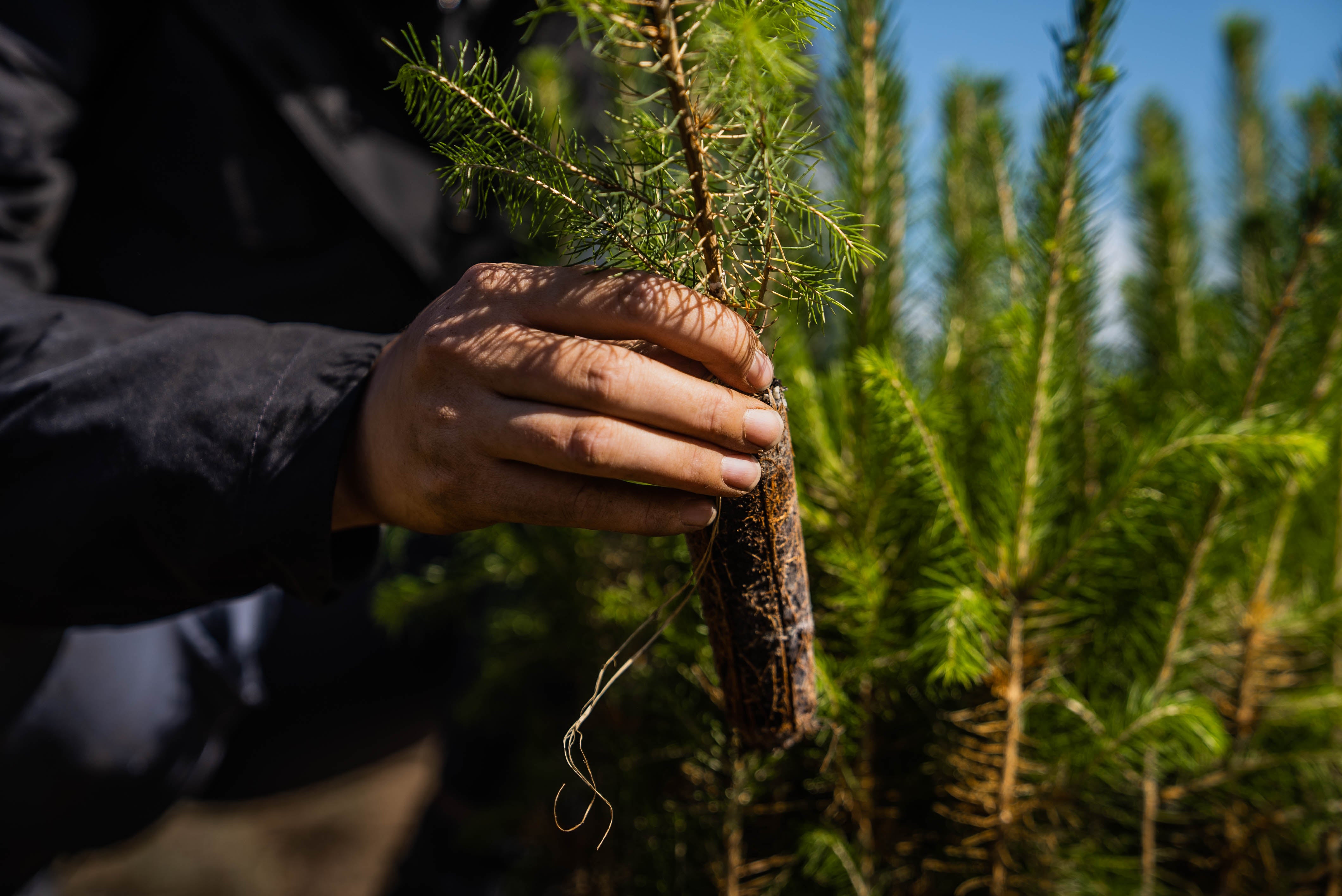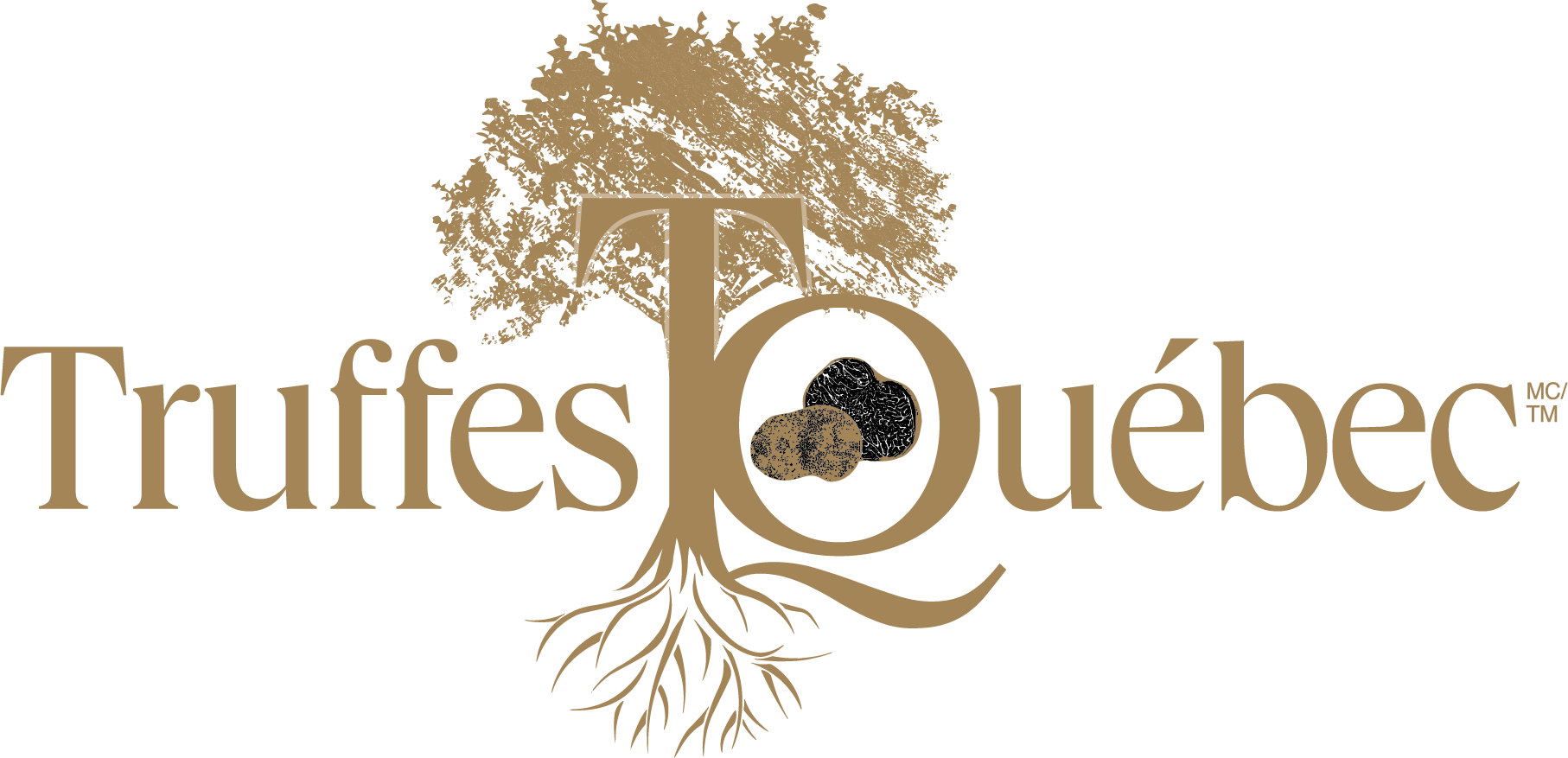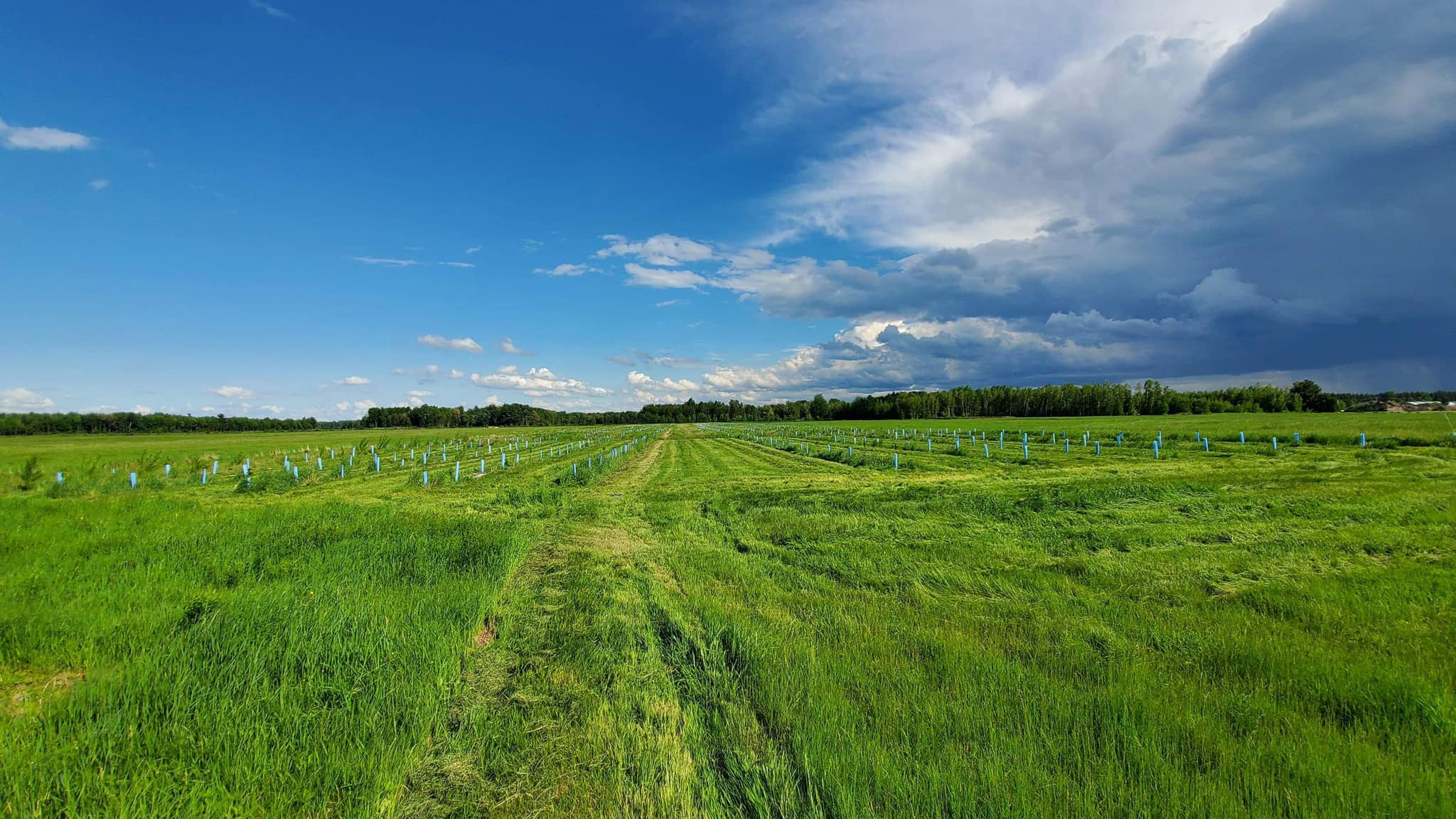planting guide


Planting a truffle tree: essential steps to know
Have you just purchased a truffle tree and now want to plant it in your garden? Congratulations! This video will guide you step by step through the planting process, as it is important to follow certain rules to ensure the growth and survival of your truffle tree. Watch the video carefully and follow the tips to successfully plant your tree and enjoy fresh truffles in a few years.
1. Location and soil preparation
Planting site
A plot of land facing due south, southwest, or southeast with a slight slope is ideal. Depending on your hardiness zone, different tree species are recommended.
Favorable soil
Your soil should be calcareous, have a clay content of less than 30%, and not be rich in organic matter to promote truffle fruiting. Simple tests can confirm these parameters on a small scale, without the need for a full soil analysis.
1. Soil Type : When planting a truffle tree, it is important to use the right soil to ensure its growth and truffle production. It is recommended to use the soil that was removed to dig the planting hole, without replacing the grass or sod covering it. Before replacing this soil around the tree's root ball, it is advisable to loosen it by breaking up any clods of earth. If the soil is heavy, clayey, and does not drain well, adding compost, composted manure, or potting soil enriched with organic matter can be beneficial, up to a depth of 10 to 15 cm. A nurseryman can advise you on the best compost, composted manure, or potting soil to lighten your soil for planting a truffle tree. However, it is important to note that you should not use potting soil or any other "mycorrhizal" planting product, as this can harm truffle production. In short, you should NOT add mycorrhizae.
2. Soil pH : Generally, Quebec soils tend to have a rather acidic pH, whereas truffle cultivation aims for a basic pH, that is, above 7. At a pH above 7, truffle development and growth are favored at the expense of other fungi in the soil. In Quebec, most soils tend to be acidic. If you don't want to have your soil tested to determine the precise pH, you can assume it is probably acidic. To raise the pH of your soil, consider adding calcium or dolomitic (magnesian) lime to the planting hole. Lime is available in bags at all garden centers. It is the carbonates contained in the lime that neutralize soil acidity.
Good to know There is an inverse relationship between pH and soil organic matter content. In fact, the higher the organic matter content, the more acidic (low) the soil pH becomes. This is why it is not recommended to plant a truffle tree in soil that contains a lot of organic matter, such as topsoil or compost purchased from a garden center.
2. planting
Plant your trees on a cloudy day, when temperatures are between 10 and 20 degrees Celsius and the winds are light. Therefore, planting is best in spring or autumn.
- Water the substrate and the roots of the truffle plant.
- Dig a hole with a diameter and depth of 20 to 30 cm. Be careful not to plant the tree too deeply.
- Ensure you have the correct depth by keeping the tree in its crate and placing it at the bottom of the hole. The base of the tree (the root collar) should be level with the ground. The trunk should never be covered with soil, and the roots, which are in the crate, should never be exposed.
- Carefully remove the tree from the tray by holding it upside down with one hand, inserting the trunk between your fingers, and pulling the tray out with the other hand. Since the substrate is wet, you may want to gently pinch the tray to help release the tree.
- Place the tree in the hole, keeping the root ball intact. The tree should be planted as straight as possible (perpendicular to the ground).
- Fill the planting hole with the soil that was initially removed. You can also add a low-organic-matter potting mix if you have some. This type of potting mix is available at garden centers.
- Lightly compact the soil with your hands so that the soil around the tree is a little deeper to prevent runoff.
- Water the plant with 2 to 4 liters of water.
- Check that the plant's collar is located approximately 2 cm below the surface of the added soil.
- Install your stake and protective tube. It is important that these are securely in place to avoid damaging the tree during strong winds.
Mulching: To reduce weed growth and retain moisture around the tree, consider using jute, natural wood chips, or fallen leaves as mulch. These types of mulch do not contaminate truffle mycelium. However, cedar or plastic mulches are not recommended for truffle trees, as they interfere with the soil's chemical and biological composition and can reduce or even prevent truffle fruiting, creating an unfavorable environment.
spacing
The recommended spacing is 2 to 4 m depending on the species. Small trees such as shrubby willows and hazelnuts can be planted 2 to 3 m apart. For larger trees, 4 m or more is suggested. The spacing between trees inoculated with different truffle species is at least 5 to 10 m to prevent one truffle species from dominating the others.
irrigation
If it has not rained within the first three days after planting, water each tree with an additional 2 to 4 liters of water.
If the tree is planted in the fall, it should receive sufficient water thereafter. If the tree is planted in spring or summer, make sure the tree receives 2 to 4 liters of water every 14 to 20 days, taking into account natural rainfall.
protection
After planting deciduous trees and for the following two to three years, strongly consider adding a stake and a protective tube to protect your trees from potential pests, while creating a microclimate around the tree that is favorable to its development.
3. maintenance (0-2 years)
Truffle plant establishment phase (0 to 2 years after planting)
It is during this phase that the plant produces many fine roots on which the symbiosis develops. The objective of the implantation phase is to ensure rapid recovery of the truffle plants as well as good root and vegetative growth, in order to be able to remove the protective materials the third spring after implantation.
Soil work
In spring, use a garden spade or hoe to loosen the soil to a depth of 20 to 30 cm and a radius of one meter around the trunk.
Irrigation
If it does not rain, provide 2 to 4 liters of water every 15 to 20 days.
Weeding
If there is no mulch around the tree, remove the vegetation near and around the trunk to a total diameter of one meter. Take the opportunity to visually inspect the tree to check its health.
Fertilization
Year 1
- Use organic water-soluble fertilizer such as fish hydrolysate to fertilize truffle plants at the same time as irrigation.
- Add half the dose recommended on the label or package to the irrigation water each time you irrigate.
- Stop fertilizing after July 1st.
- IMPORTANT: The truffle tree does not require the addition of mycorrhizae which could harm the growth of the truffle mycelium.
Example of fish hydrolyzate (2-4-0.5)
- Brand: Acadie
- Dosage on packaging: 10 ml per liter of water
- Recommended dose (half dose from the package): 5ml per liter of water
Year 2 and 3
- If the trees are frail, continue with fish hydrolysate
- If the trees are vigorous, replace the fish hydrolysate with Actisol-type granulated chicken manure (or its equivalent) at 50g/m2 around the tree once a year.
Tree pruning
- Year 1: no pruning required.
- Year 2 and 3: pruning to have a single dominant stem (single trunk).
- No pruning of hazel trees for year 1-2-3.
4. maintenance (3-8 years)
Truffle mycelium installation phase (3 to 8 years after planting)
We now observe a burn, an area at the foot of the trees where the grass is shorter and less abundant.
The aim is to promote the development of the burnt, trees and truffles.
Soil work
In spring, use a garden hoe to loosen the soil to a depth of 20 to 30 cm.
Irrigation
In drought conditions, water only when the soil is dry at a depth of 20 cm.
Weeding
Continue removing weeds within a 50cm radius of the tree.
Size
Simply remove the side branches to allow access to the tree.
Fertilization
Continue the same fertilization as the previous phase.
5. maintenance (9 years +)
Production phase (9 years and more after planting)
The trees are beginning to bear fruit and the truffles are being harvested.
The aim is to maintain the work of recent years and maintain good humidity conditions.
Truffles may appear earlier, depending on growing conditions!
6. the harvest
At Truffes Québec, we work with trained dogs, which are more docile and less voracious than pigs. This activity is called truffle hunting, which consists of searching for truffles in the soil, as they are a fungus that grows at the base of a truffle tree, in symbiosis with its roots. The word truffle hunting comes from the Latin word "cavare," which means to dig.
There isn't really an age limit for training a dog, but the best results are achieved between six and eighteen months of age. A good dog can be trained until it reaches maturity, which is around three years old. A recognized reference is CrisTalLin'O Truffes & Lagoto . When a dog finds truffles at the base of a tree, simply mark the tree; it will then produce truffles every year. Using an ice axe is recommended for digging up the truffles.
Training kits, such as the one from Canitruf in Europe, are available, but Les Truffettes' Appalachian truffle-flavored oil can also be used. Trained dogs can generally detect several types of truffles, although their effectiveness may vary. Even though the scent of the Appalachian truffle (T. canaliculatum) differs, for example, from that of T. melanosporum (Périgord truffle), the dog is likely to still be able to find it. Furthermore, Appalachian truffle oil contains a compound common to all types of truffles.
When to start?
A well-established orchard—or a trio of truffle trees— will begin to show signs of activity around five years after planting . At this stage, the base of the trees is monitored for a burnt area—a ring of bare soil caused by the truffle's biochemical activity, a good indicator that the mycelium is active. From this point onward, during the season, the base of the tree can be gently scraped, ideally with a truffle pick, to a depth of 15 cm (approximately 6 in.) to check for truffles without damaging the roots or fruiting bodies. In Quebec, the harvest period is in the fall : these checks can begin as early as the end of August for fall-maturing species and continue until the ground freezes. Some North American species mature in the fall and sometimes extend into early winter, depending on local conditions.
7. Conservation
Once harvested, truffles require meticulous care to preserve their full aroma. Ideally, the peridium—the thin layer of soil clinging to the mushroom—should be left intact , as it acts as a natural protective barrier. The truffles are then placed in an airtight container, such as a Mason jar, lined with absorbent paper, which should be changed every 24 to 48 hours to limit excessive moisture. The jar should be refrigerated between 2 and 5°C , and it is recommended to label each batch with the harvest date. Under these conditions, native truffles can be stored for several weeks.
For quick consumption of your truffles, you can gently brush them dry to remove excess soil before storing them. When handling them, use clean gloves and treat each truffle individually to avoid cross-contamination if several varieties are harvested. Before selling or eating, the truffle can be rinsed under a stream of cold water and then immediately dried with absorbent paper.
A useful little secret : the rinsing water, rich in spores, can be reused to water your truffle trees, thus promoting the development of the mycelium in the soil.
Frequently Asked Questions
Are my truffle trees guaranteed?
Yes, your trees are guaranteed against loss/mortality for a period of 30 days following possession, according to the following terms and conditions:
Trees must be planted within 48 hours of delivery. They must be equipped with a protective tube, which you can purchase from us or any retailer near you. It is understood that losses or mortality resulting indirectly from improper tree care, use not in accordance with the planting guide instructions, or any faults or damage caused by the customer, inclement weather, or damage caused by animals or other pests are not covered.
Where applicable, the guarantee covers the replacement of affected trees, subject to nursery availability, and does not include delivery charges. In all cases, this purchase is non-refundable. The customer must keep the defective tree and provide photographs documenting the problem. Although each tree has been meticulously inoculated, we cannot guarantee truffle production.
Why should I protect my truffle trees with a protective tube?
The truffle tube is a cylinder open on both sides that allows the truffle tree to receive the light and water necessary for its seedling growth while preventing animals from eating the top of the tree. Inside the protective tube, a warm and humid microclimate is created, conducive to the growth of the tree. This protection also acts against the cold and bad weather that can compromise growth and survival during the first years.
The protective tube significantly increases the tree's recovery rate and overall survival. If you don't protect your trees with protective tubes, the truffle tree recovery guarantee is no longer valid.
If you do not opt for a protective tube, a newly planted tree will benefit from partial protection against extreme temperatures and bad weather, whether it is a temporary installation with a trellis or cedar shingles, for example.
How do I know the hardiness zone of my land?
Hardiness is the ability of plants to withstand the harshness of winter. Canada is classified into hardiness zones ranging from 0 to 10. Higher numbers correspond to areas with milder winters. Each zone is further divided into two classes, " a " and " b ." Class "a" is slightly colder than "b." Microclimates often exist within a given hardiness zone. To find out your land's hardiness zone, click here .
Regarding the planting of truffle trees, you will find on the Our Trees page the hardiness zone for each tree species we sell. You will then be able to make a selection adapted to your land.
It is important to note that if you choose tree species that will be planted at the edge of their hardiness zone, you will need to provide a location sheltered from the wind in order to maximize their chances of growth and minimize the negative impacts that wind and frost can have on these trees.





